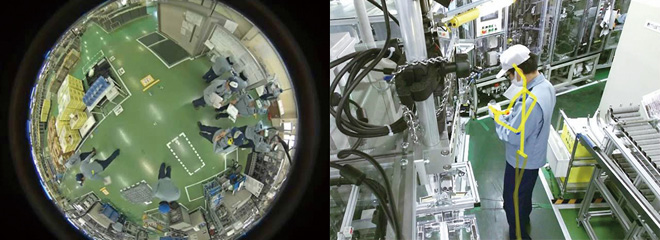Hitachi uses state-of-the art IoT and artificial intelligence (AI) technologies to reduce workloads on production lines while increasing productivity and quality. After analyzing manufacturing performance data based on 16 months of testing, Hitachi has developed an Image Analysis System that quantifies the standard behavior model of worker, the status of equipment and materials, and anomalies such as deviations in worker activities or line equipment that may result in failures.
Video:Image Analysis System
Daicel Corporation has taken various initiatives of production innovation, including visualizing the expertise highly skilled personnel need to pass on to succeeding generations. Daicel selected Hitachi as its collaborative creation partner in a project intended to advance these initiatives still further. Developed based on joint testing by both companies, the image analysis system uses depth cameras to extract 3-D forms in order to measure worker activities. The system collects positional information on human joints, such as hands, elbows, and shoulders, then statistically compares a base standard behavior model with actual movements to identify differences. It uses a similar method to monitor equipment and materials, detecting and reporting signs of anything out of the ordinary by analyzing differences from images of standard operations. This system is expected not just to improve quality and work efficiency, but to help realize effective countermeasures and training by identifying trends in operational errors. The system's achievements have drawn attention as a new type of infrastructure capable of supporting the user-friendly manufacturing approach Daicel seeks to achieve.








